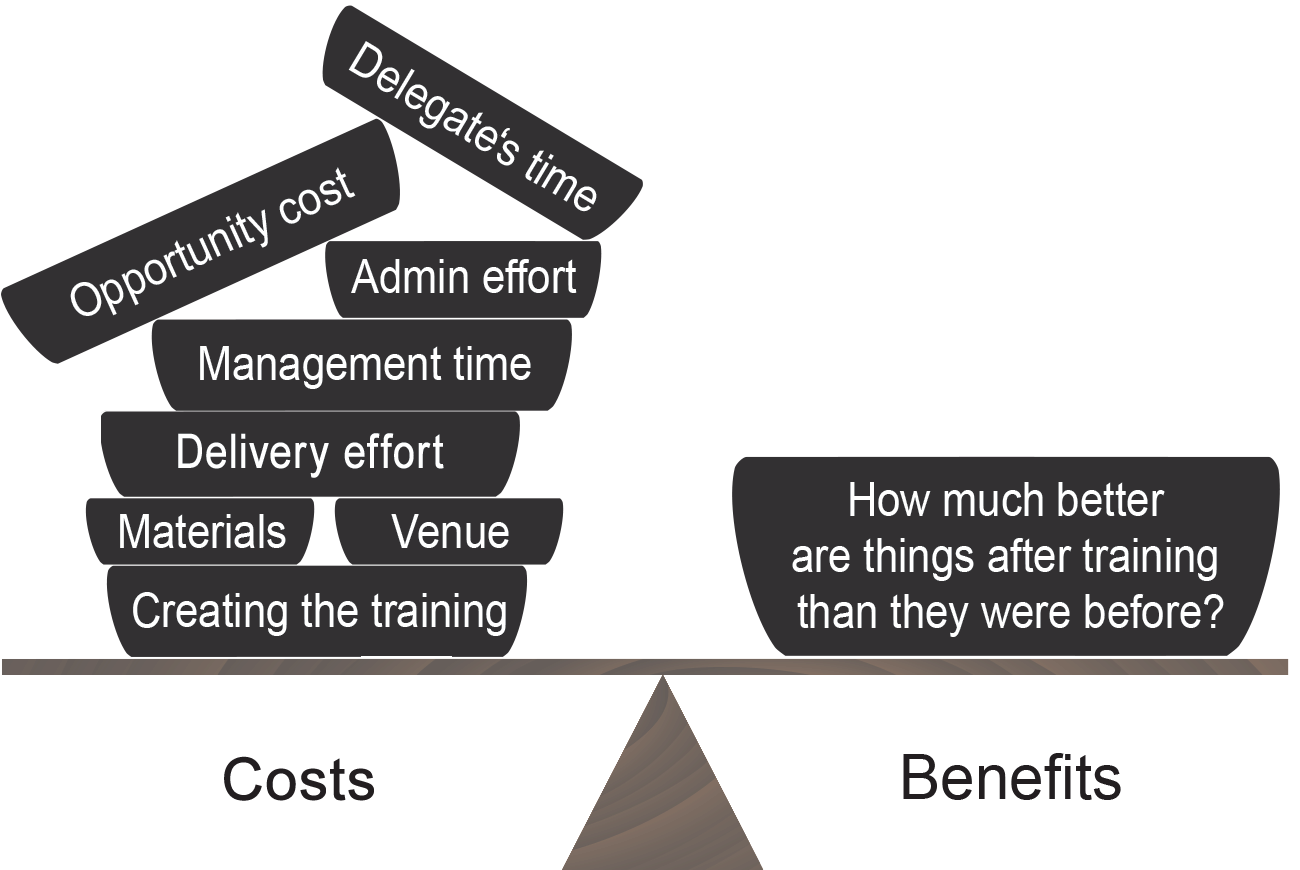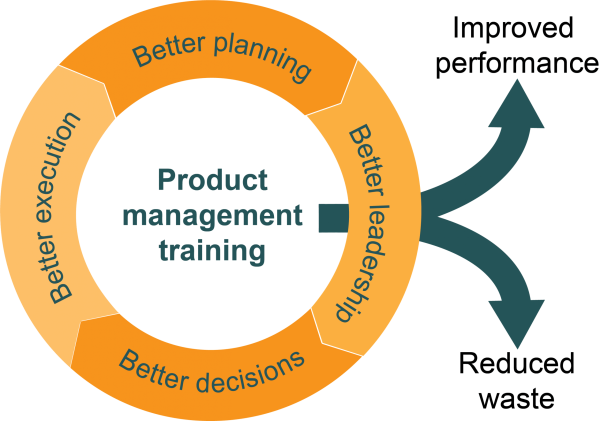Many companies claim their greatest asset is their people. Yet spending money on improving their skills can be subject to closer scrutiny than many other areas of spend.
This is largely because it’s discretionary – but it’s also tough to justify the urgency for any training.
You can read all the articles in our Product Management Journal – Training by signing up for free here.
What are the training benefits?
There are many benefits to training. Employees value training that improves their skills because it helps them do more, do it better, and become more marketable. Employers value training when it improves employees’ performance and helps the business succeed.
Product managers, more than almost any other group, are responsible for bringing business strategy to life, so improving their skills can deliver big results.
Models for evaluating training
Nice words, but how do you tangibly measure the impact of training?
Many models have been developed to answer this question: Kaufman’s 5 levels of evaluation, the Organisation Elements Model (1996); Warr, Bird and Rackham’s CIRO approach (1970); and the Alkins UCLA Evaluation Model. However, one of the most famous is the Kirkpatrick model below, which proposes 4 levels of evaluation: Reaction, Learning, Application, and Impact.

What’s interesting is that almost no-one completes the higher levels of evaluation (levels 3 and 4). The challenge is that it’s just not feasible to gather the benefit and cost information to carry out the evaluation.
While working out the costs is relatively straightforward, working out the benefits and isolating them from other factors is tough. It requires metrics to be defined for decision making, leadership, planning, and execution across the myriad of areas for which product managers have responsibility. Then either a snapshot needs to be taken of delegate performance before and after the training, or the performance of people who’ve been trained is compared against that of a control group who have similar responsibilities but who have not been trained. The effort required to do this is immense, which is why it’s rarely done. What’s also often missing from the benefits side of the equation is the value of using standardized approaches. If you lead a team and have been on the receiving end of product plans, roadmaps and strategies all presented in different formats and to different levels of rigor, you’ll understand the substantial benefit of having a common language and approach to these tasks.

Another often overlooked benefit is that your good people tend to hang around if they feel you’re investing in them through training.
Is there a simpler approach to evaluation?
An easier, alternate approach that seeks to capture business benefits is recommended by The Kite Foundation. Their approach requires the delegate and their manager to agree on the business goals to be achieved after training. They are then surveyed post-training for their perception on whether the goals are being achieved. Using perceptions to estimate improvement gets around the challenge of measurement.
How about Return On Investment (ROI)?
Research by Avatech Solutions estimated the ROI on outsourced, instructor-led training. Their analysis of training costs and impacts showed that training that delivered a 2% increase in productivity had a 100% ROI. Think of your team and your business. If your product management team looks after products generating £1m profit a year, delivering an improvement of just 2% (£20k) in the first year after training costing £10k gives an ROI of 100%. And those benefits continue long after the first year.
While it’s difficult to generalize, we believe the 2% figure severely underestimates the impact of product management training as product managers typically have a disproportionate impact on the success of their business.
Can we really measure the ROI of training?
So, is it possible to really measure the ROI of product management training? We’ve never seen it and believe that the effort required to collect the data and calculate the ROI is not worth it.
What’s the value of a product manager developing a better product strategy as a result of attending training? The impact might be measured in millions of €’s of revenue or the delivery of significant cost savings by early alignment.
On the question of waste, let’s pick a simple example. Product managers write requirements that drive a lot of effort in development. For example, 1 day’s effort from the product manager or a product owner can drive 1 month’s effort in development. Get it right, and that months’ effort is well spent. Get the requirements wrong, and you may have wasted those resources. What’s the cost of a month’s effort in development? For a typical sprint team in Agile, it might be around £30-£40k wasted.

Conclusions
Getting your team trained and making your product management more professional makes sound business sense. It’s great for retaining good people and improving performance by even a small amount easily justifies the costs of training.


